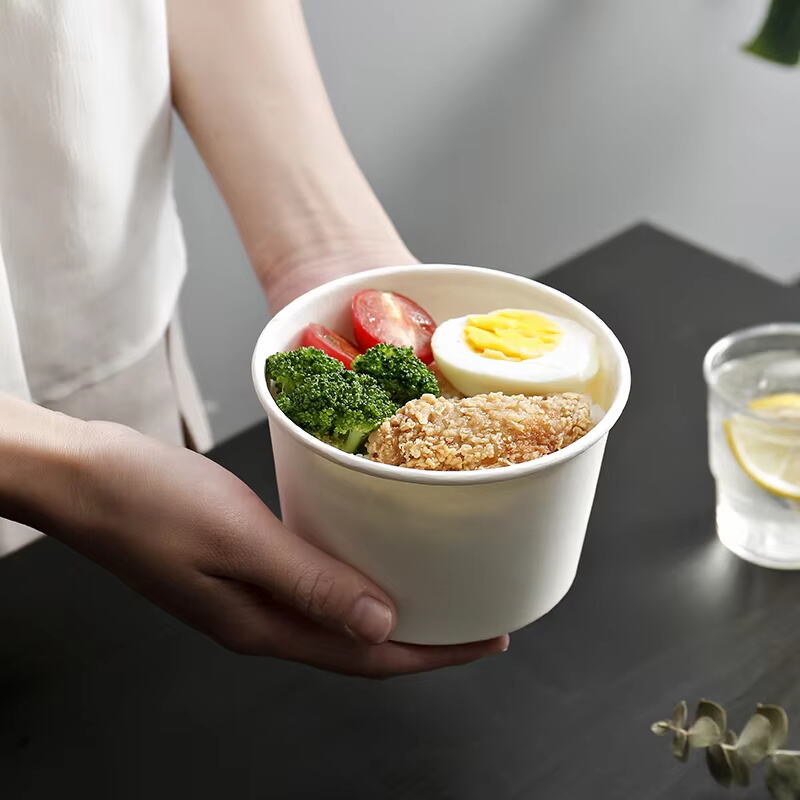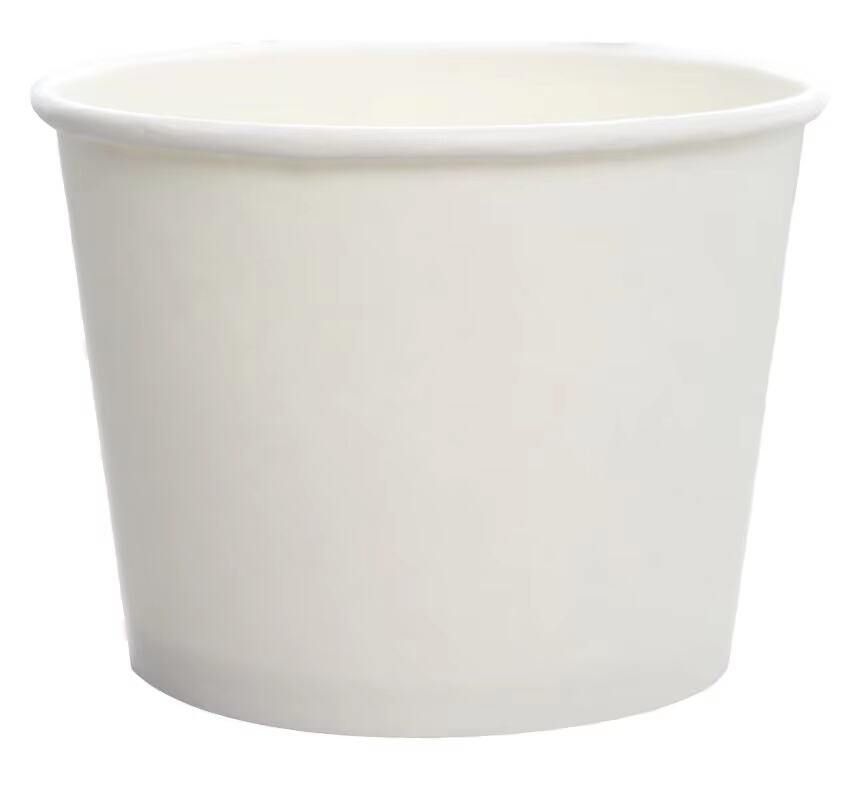The Sustainable Revolution in Food Service Packaging
The world is witnessing a remarkable shift towards eco-friendly alternatives in food packaging, and paper bowls have emerged as a leading solution in the fight against environmental degradation. These innovative containers are revolutionizing how businesses and consumers approach sustainable dining solutions while maintaining functionality and convenience. As environmental consciousness continues to grow, paper bowls represent a significant step forward in reducing our collective carbon footprint.
The food service industry has long grappled with the environmental consequences of single-use containers. Traditional plastic and foam containers have contributed substantially to global waste problems, with many ending up in landfills and oceans. Paper bowls offer a refreshing alternative that addresses these concerns while meeting the practical needs of modern food service operations.
Understanding the Environmental Benefits of Paper Bowls
Biodegradability and Waste Reduction
Paper bowls possess a remarkable advantage over conventional packaging materials - their ability to biodegrade naturally. Unlike plastic containers that can take hundreds of years to decompose, paper bowls break down within weeks to months under proper conditions. This rapid decomposition significantly reduces the burden on landfills and helps minimize long-term environmental impact.
The biodegradable nature of paper bowls also means they can be composted, creating nutrient-rich soil amendments that benefit agricultural practices. When properly disposed of in commercial composting facilities, these containers transform from waste into valuable resources, completing a sustainable lifecycle.
Renewable Resource Management
The raw materials used in paper bowl production come from renewable sources, primarily managed forests and recycled paper products. Sustainable forestry practices ensure that trees harvested for paper production are continuously replenished, maintaining a balanced ecosystem. This renewable approach stands in stark contrast to petroleum-based plastics, which deplete finite fossil fuel resources.
Moreover, many paper bowl manufacturers now implement closed-loop production systems, where water and other resources are recycled within the manufacturing process. This approach significantly reduces the environmental impact of production while maintaining high-quality standards.

Manufacturing Innovations in Paper Bowl Production
Eco-friendly Production Processes
Modern paper bowl manufacturing has evolved to incorporate numerous environmental considerations. Advanced production techniques utilize energy-efficient equipment and renewable energy sources, significantly reducing the carbon footprint of manufacturing operations. Water conservation systems and sustainable waste management practices further enhance the environmental credentials of paper bowl production.
Manufacturers are also exploring innovative coating alternatives that maintain functionality while improving environmental performance. Plant-based barriers and compostable linings are replacing traditional plastic films, ensuring that paper bowls remain fully biodegradable while still providing necessary moisture resistance.
Quality and Performance Improvements
Recent technological advances have dramatically improved the performance characteristics of paper bowls. Enhanced strength and stability allow these containers to handle hot and cold foods effectively, while improved moisture resistance prevents leakage and maintains structural integrity. These improvements have made paper bowls a viable alternative for a wide range of food service applications.
The development of heat-resistant properties and superior insulation capabilities means that paper bowls can now safely contain hot soups and beverages without compromising their environmental benefits. This combination of functionality and sustainability has driven their increasing adoption across the food service industry.
Economic Advantages of Switching to Paper Bowls
Cost-Effective Sustainability
While environmental benefits are paramount, the economic advantages of paper bowls cannot be overlooked. As production scales increase and technology improves, the cost difference between paper bowls and traditional packaging options continues to narrow. Many businesses find that the slightly higher unit cost is offset by improved brand perception and customer loyalty.
Additionally, regulatory changes in many regions are implementing taxes or bans on single-use plastics, making paper bowls an increasingly cost-competitive option. Forward-thinking businesses are recognizing the long-term financial benefits of early adoption, particularly as environmental regulations become more stringent.
Marketing and Brand Value
The use of paper bowls can significantly enhance a brand's environmental credentials and appeal to environmentally conscious consumers. This alignment with sustainability values often translates into increased customer satisfaction and loyalty, providing a competitive advantage in today's market. Many businesses report improved customer feedback and increased repeat business after switching to paper bowls.
The visual appeal and natural feel of paper bowls also contribute to an enhanced dining experience, particularly in casual dining and takeaway settings. This improved presentation can justify premium pricing strategies while reinforcing a brand's commitment to environmental responsibility.
Future Trends and Developments
Technological Innovations
The future of paper bowl technology looks promising, with ongoing research focused on improving performance while reducing environmental impact. New materials and manufacturing processes are being developed to enhance durability, heat resistance, and moisture protection while maintaining complete biodegradability. Smart packaging solutions incorporating QR codes and tracking capabilities are also emerging, allowing businesses to demonstrate their environmental commitment through transparent supply chain information.
Advancements in barrier technologies are particularly exciting, with new bio-based coatings offering improved performance without compromising environmental benefits. These innovations will continue to expand the applications for paper bowls across different food service segments.
Market Growth and Adoption
The market for paper bowls is expected to grow significantly in the coming years, driven by increasing environmental awareness and regulatory pressure. This growth is likely to spark further innovation and cost reductions, making sustainable packaging more accessible to businesses of all sizes. International markets are showing particularly strong interest, as developing nations seek to address waste management challenges through sustainable solutions.
Industry experts predict that paper bowls will become the standard in many food service applications within the next decade, supported by improved infrastructure for composting and recycling. This transition represents a crucial step toward a more sustainable future in food packaging.
Frequently Asked Questions
Are paper bowls completely biodegradable?
Most modern paper bowls are designed to be fully biodegradable, though the exact decomposition time can vary depending on the specific materials used and disposal conditions. Bowls with bio-based coatings will decompose completely in commercial composting facilities within 2-3 months.
How do paper bowls compare to plastic in terms of cost?
While paper bowls may have a slightly higher unit cost than traditional plastic alternatives, the price difference is decreasing as production scales increase. Many businesses find that the additional cost is offset by improved customer perception and potential regulatory compliance savings.
What types of food can be safely served in paper bowls?
Modern paper bowls are designed to handle a wide range of hot and cold foods, including soups, salads, and prepared meals. Advanced coating technologies ensure that they maintain their structural integrity and prevent leakage while remaining environmentally friendly.
